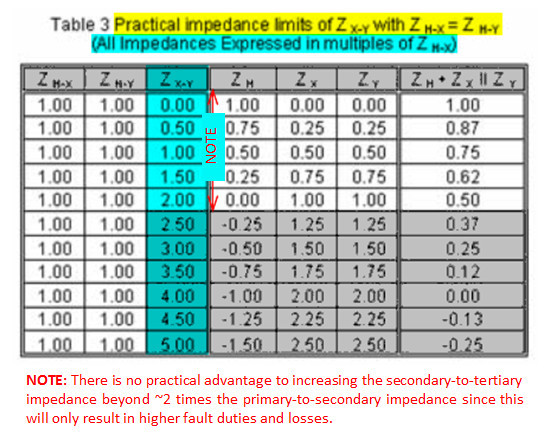The impedances of three-winding transformers have always been an enigma to me and the end seems still a long way off.
I now sit with one spec'd as follows:
HV = 11kV, MV = 6.6kV, LV = 415V
HV:MV = 3MVA, Z = 5.37%
HV:LV = 100kVA, Z = 0.7%
MV:LV = 100kVA (this is not given on the nameplate but must be 100kVA I think because the LV can only handle 100kVA), Z = 0.94%
So now we have an LV winding which has FLA = 139A @415V with a three-phase fault level of 17.52kA. For a more common distribution trfr with a 5% impedance fault level would be maximum of 20*FLA = 2780A. Now it is a whopping 126*FLA.
Question - is a Z = 0.7% actually possible? I won't ask how as it'll probably go above my head.
I now sit with one spec'd as follows:
HV = 11kV, MV = 6.6kV, LV = 415V
HV:MV = 3MVA, Z = 5.37%
HV:LV = 100kVA, Z = 0.7%
MV:LV = 100kVA (this is not given on the nameplate but must be 100kVA I think because the LV can only handle 100kVA), Z = 0.94%
So now we have an LV winding which has FLA = 139A @415V with a three-phase fault level of 17.52kA. For a more common distribution trfr with a 5% impedance fault level would be maximum of 20*FLA = 2780A. Now it is a whopping 126*FLA.
Question - is a Z = 0.7% actually possible? I won't ask how as it'll probably go above my head.

